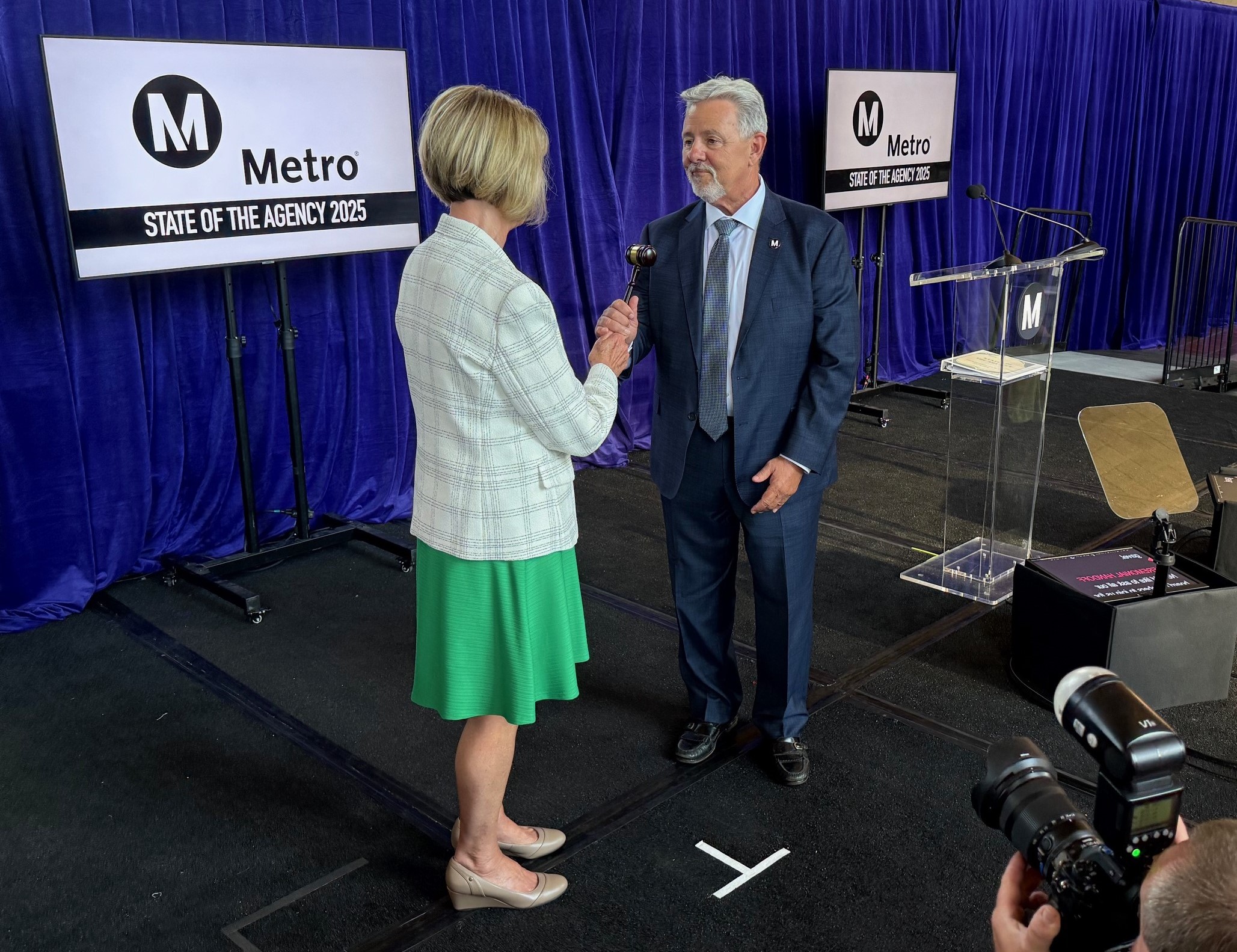In the ongoing war between Ed Roski and Majestic Realty versus Anschutz Entertainment Group (AEG) over whether the National Football League should move a team to the sprawling suburbs of the City of Industry or Downtown Los Angeles a new question has arisen: "will NFL fans ride transit to a football game?" Blogdowntown quotes a Majestic executive defending and promoting the auto-sprawl bonafides of the City of Industry at a panel discussion last week:
At a Thursday panel organized by the Pat Brown Institute, Majestic's John Semcken talked about growing up in New York and taking the train to Yankees games. He doesn't see the same happening for football.
"I think a football stadium is a different animal," he said. "People don't take mass transit to football games."
The location of Majestic's proposed stadium in the City of Industry is "the single biggest asset in our project," Semcken said. The site is within a one-hour drive of 15.5 million people in a four-county region.
It's true that people don't take mass transit to games that are located in the suburbs, surrounded by gigantic parking lots with limited mass transit options. But stadiums located near to the urban core of major cities, think Soldier Field in Chicago, have a rich history of multiple transit options and fans riding the rail and buses to the stadium. Even suburban stadiums are embracing transit as a way to get people to come to their games, something that Majestic Realty surely realizes as they've already announced that their planning for increased Metrolink service to a station adjacent to the proposed stadium in Industry.
But there are still some major transportation challenges that need to be addressed for the proposed Farmers Field in the Downtown. Indeed, a working transportation plan for the stadium could be the biggest challenge facing AEG and will attract the lion's share of attention during the public process rivaled only by the question of whether or not the stadium is receiving a public subsidy. The city's blue ribbon commission, one of at least three government bodies who are reviewing the stadium, is already looking at the issue the wrong way by asking people "what steps can be taken to improve traffic around the LA Live-Staples Center complex."
If it's ideas on how to make transportation for the events center and improve public confidence that they're looking for, Streetsblog has plenty of them. Our suggestions can be found after the jump. Leave yours in the comments section.
1) Complete a real traffic study, and have the study be peer reviewed by an independent traffic consultant. Heck, let one of the few stadium skeptics pick the traffic firm that completes the review. Much of the opposition that exists to a Downtown stadium would evaporate if people had confidence that it's not going to create a network of impassable gridlocked streets everytime there's an event, football game or otherwise, at Farmers Field.
2) Encourage people to "take the train to the game." There's a lot more to promoting transit than sending out a press release announcing that someone else is paying for your fans to ride to your event center for free. Assuming that a future NFL team is serious about creating a pro-transit environment, a real marketing campaign is needed. And by "marketing campaign," we don't mean that the owner of the team should make statements belittling transit and sending executives to beg for other people to spend money for people to come to their event.
And don't stop at marketing, make it easy for people to buy a ticket by offering transit tickets, and maps, when selling tickets to the game or event. NASCAR already offers tickets at the point of sale, and has actually been a progressive leader in having ticket buyers also ride transit.
Transit also provides a solution to the "Tailgate problem." Work with the Coliseum Authority to allow people to tailgate in the Coliseum Parking lot and take Expo Service directly to Farmers Field.
3) Let's see some renderings of what a "walkable stadium" looks like. AEG has claimed that an advantage to its event center over the proposed stadium in Industry is that by locating it in a dense urban core, it will be a place that people can walk to. If that's the case, then planners should let us see what the plans are to improve pedestrian access to the Farmers Field area.
Will the streets feeding in to the stadium resemble the progressive designs we've seen through the MyFigueroa project, or will it resemble the traffic sewer we know from the current Figueroa configuration? It's hard to say, because the renderings that have been made public thus far are only of the stadium, and show nothing of the urban environment that AEG says makes the sight so attractive. In short, don't just tell everyone that people will walk to the event center, show us what you're going to do to make that a pleasant and safe trip.
4) When looking for an example of how to provide access for bicyclists to Farmers Field, AEG and their planners should look north to Dodger Stadium, and keep looking another 500 miles or so to the San Francisco Giants who's bike valet system is heralded as the best in the country for a major event center. In addition, by providing a first class bike valet system, AEG has a chance to give back to the community. Let the Los Angeles County Bicycle Coalition, which has been providing bike valet around the city and county, handle the valet for Farmers Field events.








